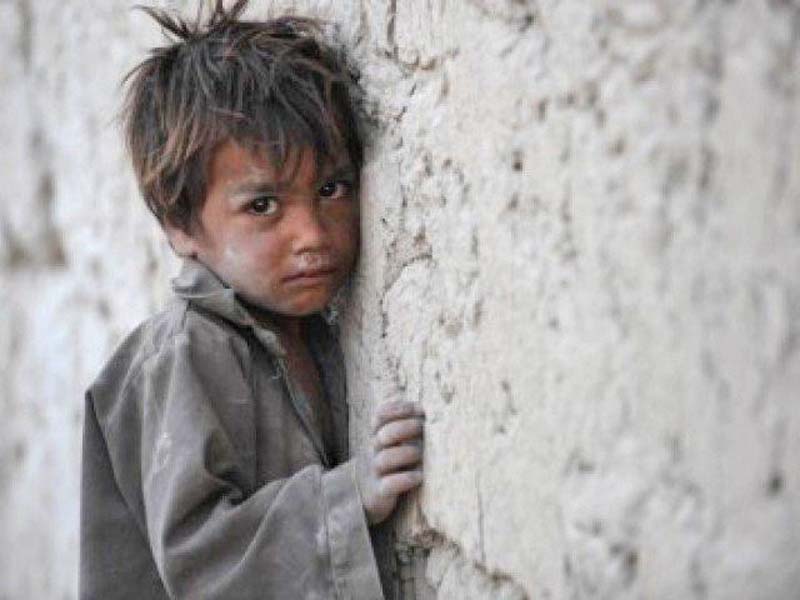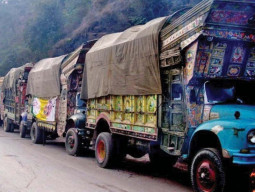
ISLAMABAD: Slump in exports, low levels of employment and income generation have lately become hot topics in Pakistan.
On the other hand, poor growth in indirect tax-payments and slippages remain a puzzling mystery.
These two simultaneous trends indicate that Pakistan is unable to come out of the spiral of inflation, poverty-proliferation and failure to increase income of the middle- and lower-middle tier of the population.
Regional integration can help reduce poverty, say experts
Subsidies, remittances from overseas Pakistani labour force, investment under public sector development programme, private charity and many other steps fail to help the low-income group become active partners in economic development. This participation is not possible without organic growth of the market.
Is the total amount of money generated through the above cited instrument too little when juxtaposed to the income-depleting/unemployment factors, or are these instruments mis-targeting?
This question is not pointedly asked by the economic analysts in Pakistan, because neither is there reliable data on the situation nor is welfare and poverty alleviation the major study subjects at the government and private levels as market-expansion factors.
The Poverty Reduction Strategy Paper (PRSP) made public under the Musharraf regime carries five interesting observations.
Firstly, the paper observed, poverty increased in the 1960s despite a very high growth rate due to low employment generation and the declining real wage rate.
Secondly, decline in poverty levels was observed in the 1970s despite a low growth rate because of employment generation and focus on meeting the basic needs of the people. Thirdly, sharp decline in poverty, because of high growth and employment generation, occurred in the 1980s.
Fourthly, the paper observed a sharp increase in poverty and slowdown in growth due to macroeconomic shocks due to successive drought between 1999 and 2001 and rising unemployment.
Lastly, the paper noted, poverty in Pakistan is characterised by concentrated clusters around the poverty line, which suggests that there exists a high portion of vulnerable population that is likely to move in and out of poverty trap as a result of changing economic conditions.
Pakistan performs worst in meeting Millennium Development Goals
This underscores the importance of looking at a range of factors around the poverty line for devising an appropriate poverty reduction strategy as well as for assessing the impact of policy changes.
Pakistan has yet to produce a better document on this issue, though the PRSP-proposed interventions neither took off nor produced any tangible results.
It can be safely deduced that the private sector has little incentive carry out a nationwide survey on the issue, whereas the government seems disinterested in targeting poverty as a market expansion mechanism.
The most important question in this regard is whether Pakistan will continue to suffer slumps and poor consumer activity if both the government and the private sector fail to undertake the mission of market expansion through a comprehensive programme.
Measures to address poverty
And, what is this comprehensive plan? One need not be familiar with rocket science to uncover the causes of the slumps and to draw up official policy interventions to address them. All instruments in this regard should be activated.
Most important instruments in line are: tax-policy, subsidy, income generating funds, investment promotion steps and state-spending amounts. If one visits these five areas with intent to alleviate poverty while aiming for market expansion, simultaneous, one will not run short of effective action to counter the slumps.
Most critics suggest the government to reduce its spending in order to reduce the tax demand. This is a foolish suggestion and it should be re-articulated: the government should increase the development budget while decreasing the non-development budget by maintaining a rational taxation policy and administration.
Indirect taxation should be applied carefully, to prevent its impact on the lower and middle income groups. As such an impact can adversely impact market expansion and consumption, on a macro scale.
An investment policy that is free of bureaucratic bottlenecks and undue barriers should be implemented rather than offering money-whitening instruments at the expense of compliant tax-paying population.
The writer has worked with major newspapers and specialises in the analysis of public finance and geo-economics of terrorism
Published in The Express Tribune, December 28th, 2015.
Like Business on Facebook, follow @TribuneBiz on Twitter to stay informed and join in the conversation.


































































COMMENTS (10)
Comments are moderated and generally will be posted if they are on-topic and not abusive.
For more information, please see our Comments FAQ